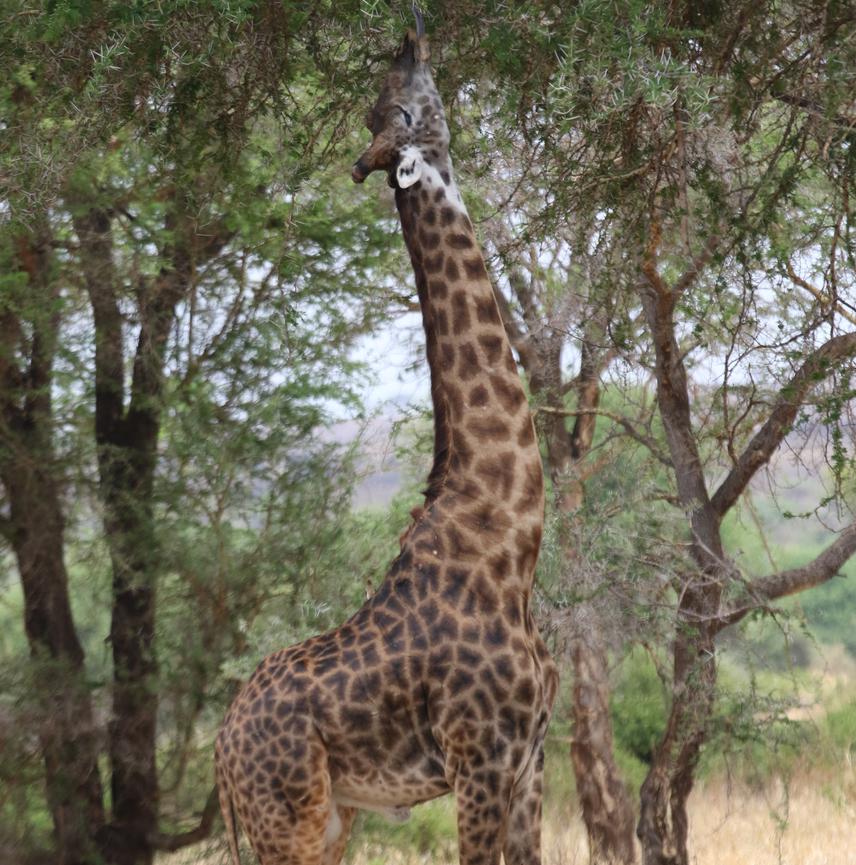Matana Levi
The giraffe is Tanzania’s iconic species, inhabiting naturally heterogeneous ecosystems. Currently, African rangelands have been altered strongly due to the spread of woody plants into open savanna landscapes, particularly in Eastern Africa, where the grazing pressure of livestock and wildlife is high. Despite a general increase in woody vegetation across the savanna rangeland systems, giraffe numbers have declined in recent decades. Little is known about the giraffe foraging ecology and preference of woody species in these savannas. Hence, the goal of our study is to investigate whether the spread of woody plants might benefit giraffe feeding ecology by providing preferred forage, or adversely affect feeding ecology due to unpalatable species. The proposed study will provide information about the current availability and utilization of primary woody plant browse species and whether this determines giraffe habitat selection and foraging grounds in the Tarangire-Manyara Ecosystem, Tanzania.

Giraffe (Giraffa Camelopardalis) is Tanzania’s iconic species inhabiting naturally heterogeneous ecosystems that are in continuously dynamic flux between woodlands and open grasslands (Renberg, 2007; Rachel, 2007).
Despite their wide range across Africa, little is known about their feeding ecology in human-influenced landscapes. Woody vegetation dynamics have been related to giraffe population increases (Pellew, 1983b) and decreases (Strauss et al. 2015). Despite a general increase in woody vegetation across rangeland systems (Belayneh & Tessema, 2017), which should have benefitted this browser species (Mahenya et al., 2016; Pellew 1984a), giraffe numbers have declined by 38% in recent decades (Muller et al., 2016). Feeding ecology and foraging selection of giraffes are strongly impacted by these dynamics documented in a few giraffe populations (Mahenya & Tessema, 2016; Pellew, 1984), but little is known with regard to foraging behavior by giraffes in human-influenced landscapes. Understanding the succession of woody plants and how it hinders or facilitates quality and quantity of foraging grounds is important for sustainable management of natural resources.
The present study aims at determining the habitat selection and feeding behavior of giraffe in the Tarangire Manyara Ecosystem, with particular attention to Dichrostachys cinerea, a shrub species that tends to form clonal mats in areas heavily impacted by domestic livestock grazing. Specifically, the study seeks to quantify the third- and fourth-order habitat selection by giraffes, determining seasonal habitat selection and foraging preference of giraffes in a large, heterogeneous landscape and quantifying the potential importance of D. cinerea as a forage species in the Tarangire-Manyara Ecosystem. We hypothesize that giraffes will presumably browse on forage species in proportion to their availability. The proposed study will provide information about the current availability and utilization of primary woody plant browse species in the Tarangire ecosystem, and their use by giraffes. Results obtained from this study will inform best rangeland management practices for effective giraffe conservation.